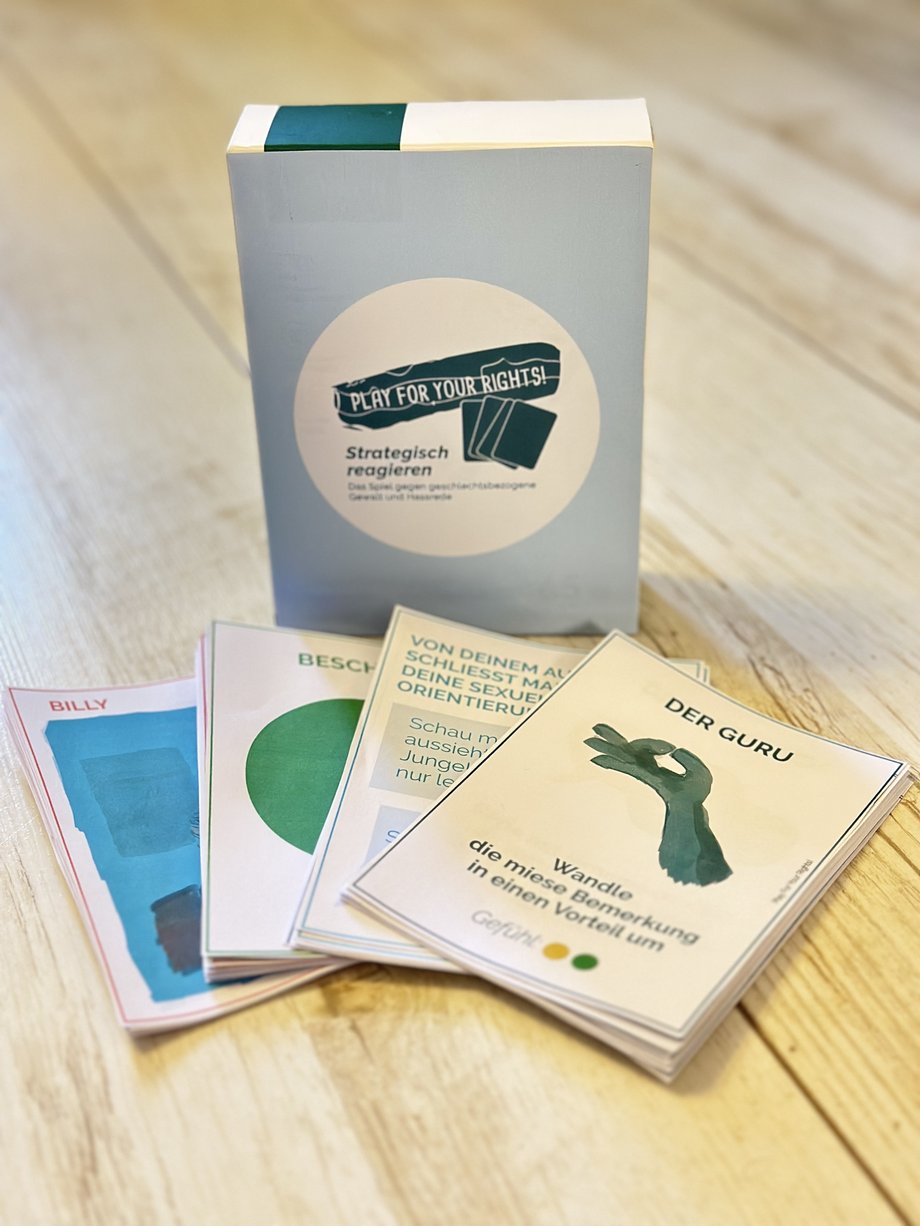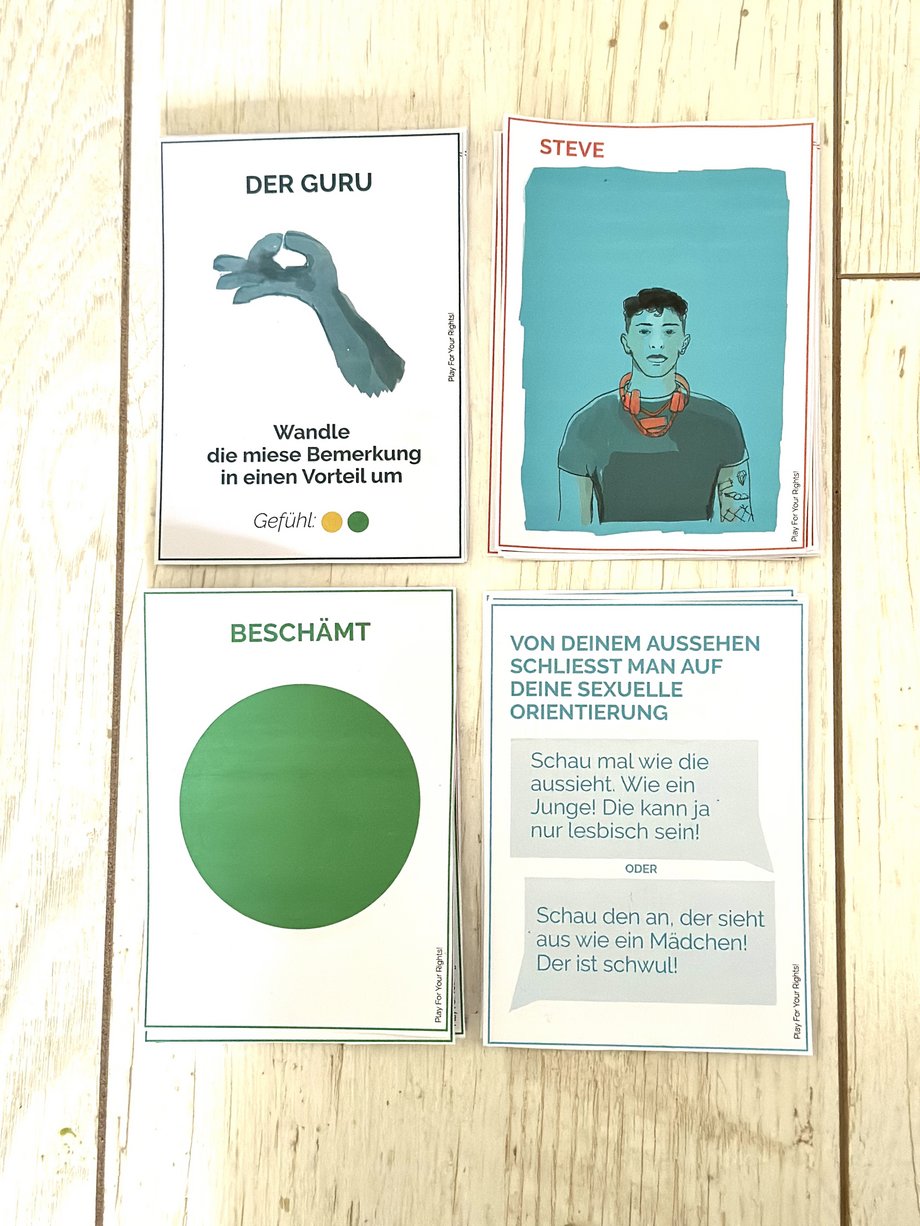React strategically
"Play For Your Rights" is an innovative card game that offers young people a safe space to playfully engage with the topics of hate speech and gender-based violence. The playful elements are linked to the world of emotions and relationships and enable young people to discuss these important topics. The game helps to recognise different forms of sexist hate speech and the role of gender stereotypes and prejudice in language. The card game is also accompanied by a digital urban game. The accompanying app mirrors some of the situations depicted on the cards and thus opens up new ways of working and reflecting with young people. Overall, this set offers a holistic and entertaining method for sensitising young people to the topics of hate speech and gender-based violence.
A video documentation of the card game is available here.
Number of participants
Split into teams (minimum 3 to maximum 4 teams, each team can have 2 to 6 participants)
Age recommendation
from 12 years
Duration
1.5 to 2 hours
Venue
Seminar room with tables, whiteboard/chalkboard
Set-up and procedure
One team plays the role of the characterand uses the character cards. Another team plays as the narrator team and uses the situation cards. There are alsoone or two ally teams, each of which receives a stack of strategy cards.receive a deck of strategy cards. The emotion cardsare displayed in the room for all to see (e.g. attached to the wall/whiteboard or on a table in the centre of the room). The game begins with the character team selecting a character card, showing it to the other teams and introducing the person on it. The narrator team selects a negative evaluation from the pile of situation cards that they believe could happen to the person based on their appearance and the character traits presented. At this point, the character team selects one to a maximum of three feelings from the feelings cards that can be associated with this offence. They make sure that these emotion cards are still face down so that the other teams cannot see them. During this time, each ally team analyses the situation and tries to understand how the offended character feels by looking at the emotion cards. Each ally team now decides on a maximum of three feelings that they think match the situation. Then each ally team chooses a strategy card that contains one or two of the chosen feelings. Based on the chosen strategy card, each ally team develops a sentence that the person under attack can use to get out of the unpleasant situation or to free themselves. Each team must justify their choice of strategy. After all ally teams have presented their strategies and explained their reasons, the character team shows the feelings they have chosen for their character in the situation and explains their choice. Then the character team chooses which of the strategies presented by the ally teams makes the most sense and is the most helpful for the character to master the situation.
Reacting strategically is part of our topic box Stress on the Net, but can also be borrowed separately.


